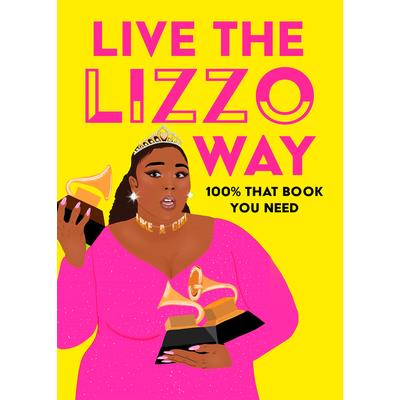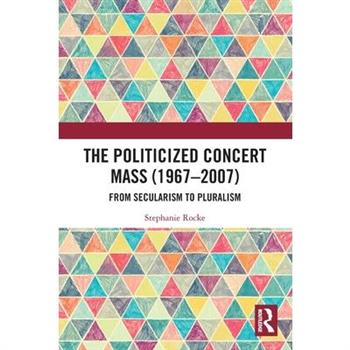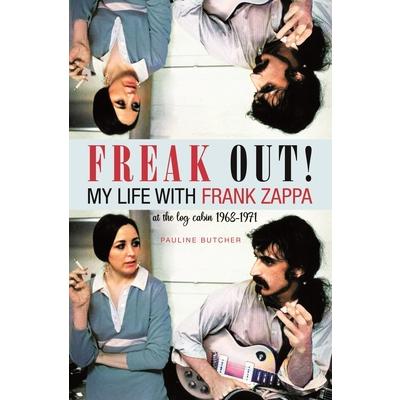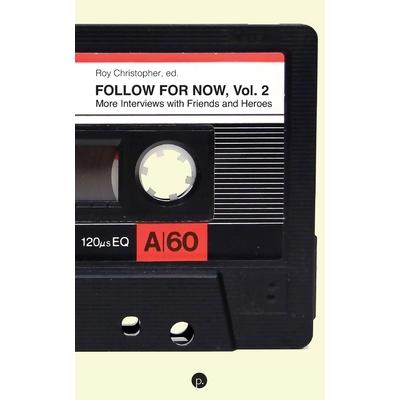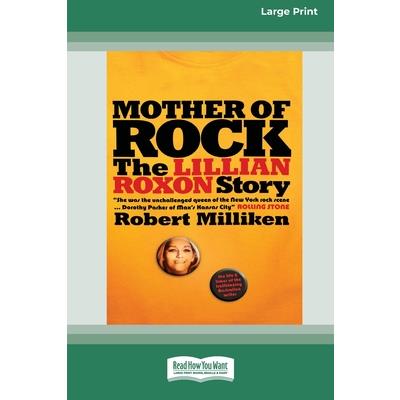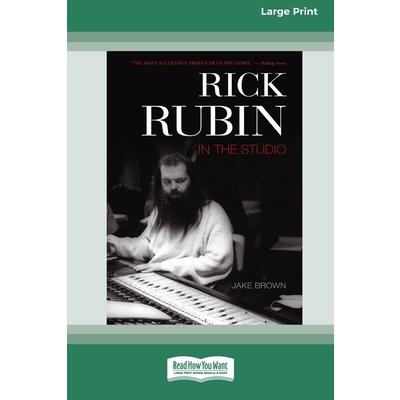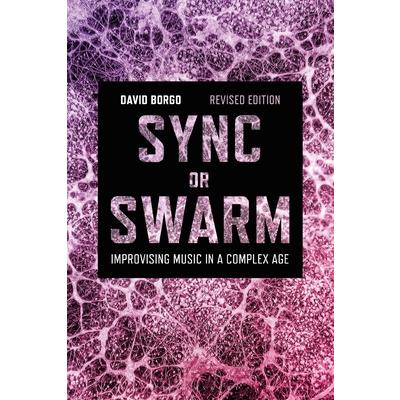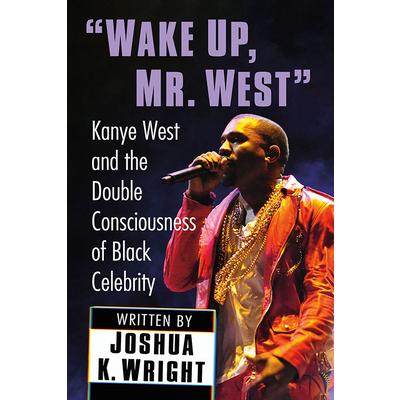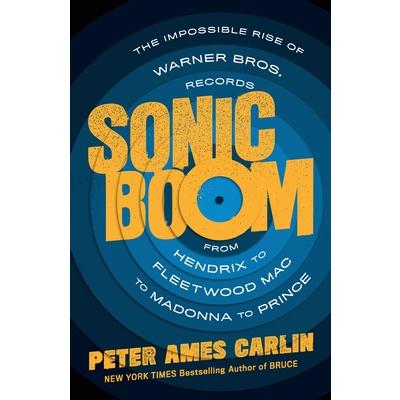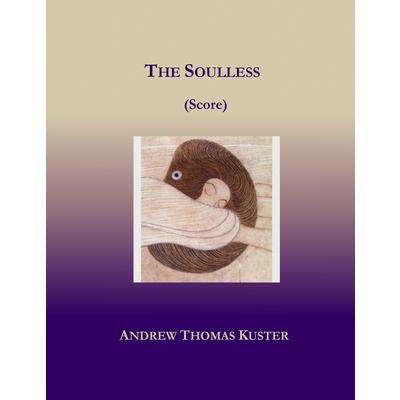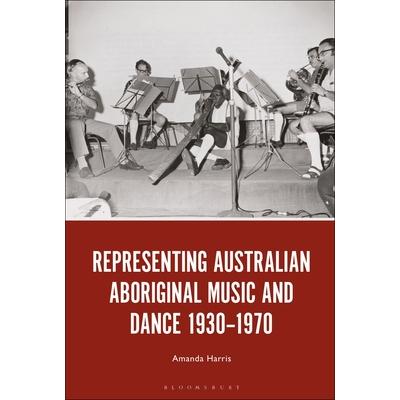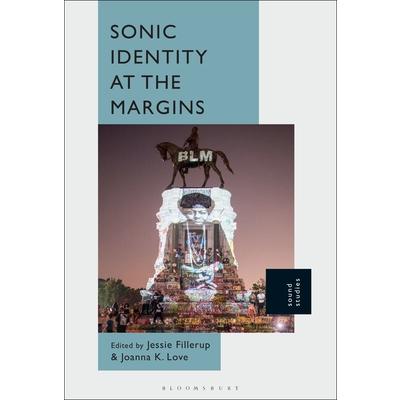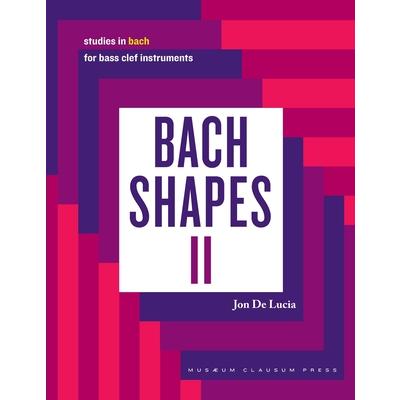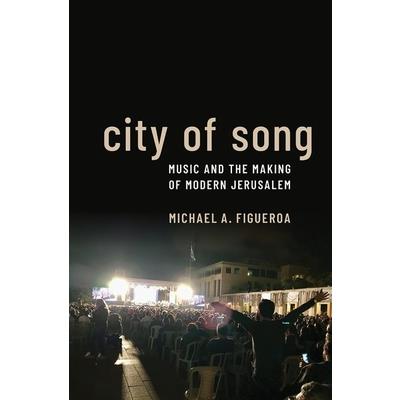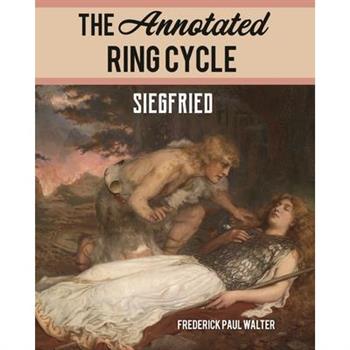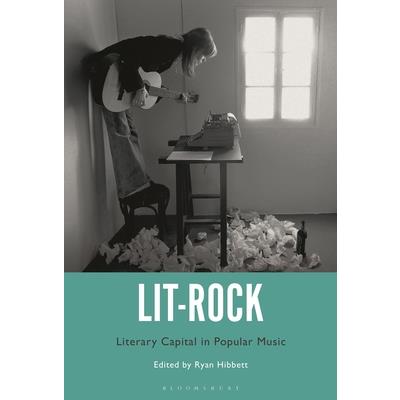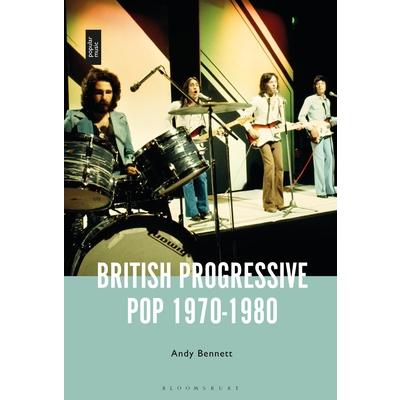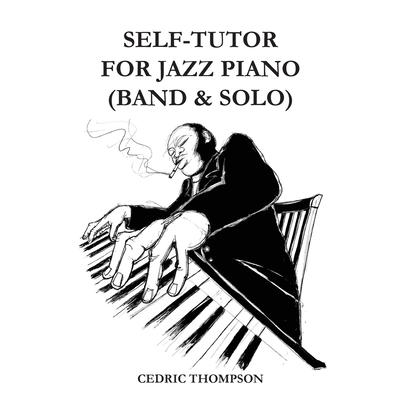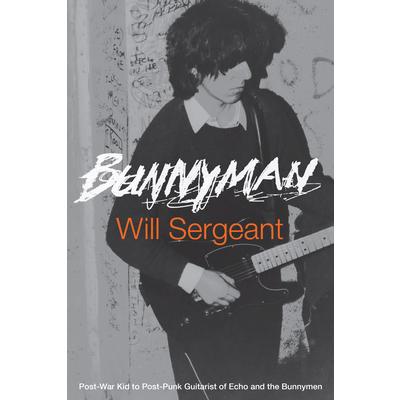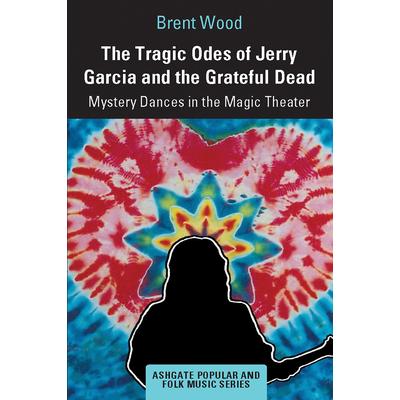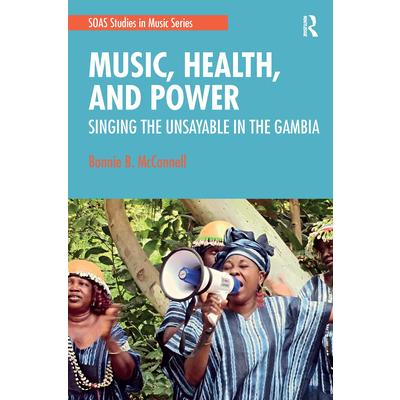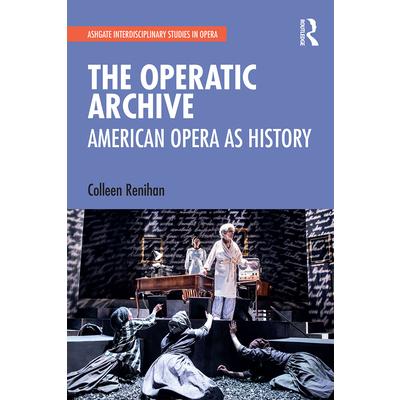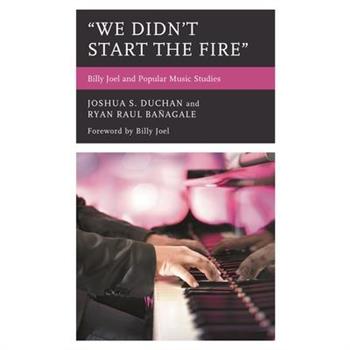The Christian Book of Mystical Verse
The Christian Book of Mystical Verse, first published in 1963, is a collection of poems, hymns, and prayers compiled by Christian pastor and writer A.W. Tozer. Intended to provide an aid to the devotee, it is a selection of over 100 pieces of theologically sound verse to support "the worshipping soul." A.W. Tozer (1897-1963) was a self-educated pastor. He first heard the call to Christianity as a teen, when he heard a street preacher say, "If you don't know how to be saved ... just call on God, saying 'Lord be merciful to me a sinner.'" Tozer heeded the call, and began a life dedicated to Christ.Calling on God became a cornerstone of his faith. He had an intensely personal relationship with God, and was seen to pray in his office for hours at a time, sometimes on his couch and sometimes prostrate on the floor. As a pastor with the Christian and Missionary Alliance, he spent his career preaching Biblical doctrine, advocating that his congregants turn away from worldliness and toward the fundamentals of the faith.It may seem odd to find a fundamentalist like Tozer use the word "mystical" in the title of his collection. But in his introduction, he differentiates the Christian mystic from those with "a strong psychic bent that predisposes them toward the occult ... ready to accept whatever in the realm of religion is bizarre and prodigious."Rather, the mystic of Tozer's collection had experienced "... that personal spiritual experience common to the saints of Bible times and well known to multitudes of persons in the post-Biblical era. I refer to the evangelical mystic who has been brought by the gospel into intimate fellowship with the Godhead." Those he identified as mystics include clergy and pastors, hymn writers, poets, reformers, and others. They span different denominations of Christianity, from French Roman Catholics to German Calvinists to American Baptists.To Tozer, the mystical is God-oriented. The poems in his collection "...begin with God, embrace the worshipping soul and return to God again." While these verses are not from the scriptures, one can trust that they are fully supported by the Biblical text. A fundamentalist like Tozer would not include any hymn or prayer that was not theologically sound and supported by the source material.There are 111 verses and hymns included in this collection, divided into 15 logical sections: Adoration of the GodheadDevotional Meditations on the Cross of ChristPenitential Reflections on Our SinsRejoicing in Forgiveness and JustificationYearning for Purity of HeartAspirations After GodDelighting in God's PresenceThe Raptures of Divine LoveThe Rest of FaithThe Spiritual WarfareVictory Through PraiseThe Prayer of QuietThe Bliss of CommunionJoyous Anticipation of Christ's ReturnImmortality and the World to ComeAs Tozer explains, "This is a book for the worshiper rather than for the student...Everything here is for use in private devotion. I have had in mind not a congregation but the lone individual." The collection can be used as a devotional, with the reader meditating on a single verse each day. The organization by topic can also let you search for verses that will support your current Bible study. Or, simply flip to a page at random, and see which verse has been chosen for you on that day.The Christian Book of Mystical Verse was the last of Tozer's books to be published during his lifetime. Since then, many more compilations of his essays, sermons, and articles have been published, ensuring that this brilliant Christian is still being read and enjoyed by modern audiences.
The Christian Book of Mystical Verse
The Christian Book of Mystical Verse, first published in 1963, is a collection of poems, hymns, and prayers compiled by Christian pastor and writer A.W. Tozer. Intended to provide an aid to the devotee, it is a selection of over 100 pieces of theologically sound verse to support "the worshipping soul." A.W. Tozer (1897-1963) was a self-educated pastor. He first heard the call to Christianity as a teen, when he heard a street preacher say, "If you don't know how to be saved ... just call on God, saying 'Lord be merciful to me a sinner.'" Tozer heeded the call, and began a life dedicated to Christ.Calling on God became a cornerstone of his faith. He had an intensely personal relationship with God, and was seen to pray in his office for hours at a time, sometimes on his couch and sometimes prostrate on the floor. As a pastor with the Christian and Missionary Alliance, he spent his career preaching Biblical doctrine, advocating that his congregants turn away from worldliness and toward the fundamentals of the faith.It may seem odd to find a fundamentalist like Tozer use the word "mystical" in the title of his collection. But in his introduction, he differentiates the Christian mystic from those with "a strong psychic bent that predisposes them toward the occult ... ready to accept whatever in the realm of religion is bizarre and prodigious."Rather, the mystic of Tozer's collection had experienced "... that personal spiritual experience common to the saints of Bible times and well known to multitudes of persons in the post-Biblical era. I refer to the evangelical mystic who has been brought by the gospel into intimate fellowship with the Godhead." Those he identified as mystics include clergy and pastors, hymn writers, poets, reformers, and others. They span different denominations of Christianity, from French Roman Catholics to German Calvinists to American Baptists.To Tozer, the mystical is God-oriented. The poems in his collection "...begin with God, embrace the worshipping soul and return to God again." While these verses are not from the scriptures, one can trust that they are fully supported by the Biblical text. A fundamentalist like Tozer would not include any hymn or prayer that was not theologically sound and supported by the source material.There are 111 verses and hymns included in this collection, divided into 15 logical sections: Adoration of the GodheadDevotional Meditations on the Cross of ChristPenitential Reflections on Our SinsRejoicing in Forgiveness and JustificationYearning for Purity of HeartAspirations After GodDelighting in God's PresenceThe Raptures of Divine LoveThe Rest of FaithThe Spiritual WarfareVictory Through PraiseThe Prayer of QuietThe Bliss of CommunionJoyous Anticipation of Christ's ReturnImmortality and the World to ComeAs Tozer explains, "This is a book for the worshiper rather than for the student...Everything here is for use in private devotion. I have had in mind not a congregation but the lone individual." The collection can be used as a devotional, with the reader meditating on a single verse each day. The organization by topic can also let you search for verses that will support your current Bible study. Or, simply flip to a page at random, and see which verse has been chosen for you on that day.The Christian Book of Mystical Verse was the last of Tozer's books to be published during his lifetime. Since then, many more compilations of his essays, sermons, and articles have been published, ensuring that this brilliant Christian is still being read and enjoyed by modern audiences.
One-Hit Wonders
The one-hit wonder has a long and storied history in popular music, exhorting listeners to dance, to teach the world to sing in perfect harmony, to ponder mortality, to get a job, to bask in the sunshine, or just to get up and dance again. Catchy, memorable, irritating, or simply ubiquitous, one-hit wonders capture something of the mood of a time. This collection provides a series of short, sharp chapters focusing on one-hit wonders from the 1950s to the present day, with a view toward understanding both the mechanics of success and the socio-musical contexts within which such songs became hits. Some artists included here might have aspired to success but only managed one hit, while others enjoyed lengthy, if unremarkable, careers after their initial chart success. Put together, these chapters provide not only a capsule history of popular music tastes, but also ruminations on the changing nature of the music industry and the mechanics of fame.
Terrorized, The Collected Interviews, Volume One
TERRORIZER WAS THE WORLD'S LEADING EXTREME MUSIC PUBLICATION FROM ITS LAUNCH IN 1993 TO ITS UNTIMELY DEMISE IN 2018. IAN GLASPER WAS ONE OF THE FEW CONSTANTS DURING THE MAGAZINE'S TWENTY-FIVE YEAR REIGN OF TERROR, AND THEIR MAIN CORRESPONDENT FOR PUNK, HARDCORE AND THRASH METAL. HERE, FOR THE VERY FIRST TIME, HE HAS COLLECTED ALL HIS INTERVIEWS TOGETHER, INTO A TWO VOLUME COLLECTION, GIVING US REAL INSIGHT INTO THE BANDS AND THE ALTERNATIVE SCENE THEY CAME FROM. TERRORIZED VOLUME ONE INCLUDES HUNDREDS OF OLD SCHOOL INTERVIEWS WITH BANDS SUCH AS AGNOSTIC FRONT, BAD RELIGION, CONVERGE, DISCHARGE, EARTH CRISIS, GUTTERMOUTH, H2O, INTEGRITY AND MANY MORE...
Live the Lizzo Way
A celebration of Lizzo's love and light. We all want a bit more Lizzo in our lives! A global superstar who has become a beacon of hope for the marginalised as well as the mainstream. Lizzo spreads messages of joy, self-love and self-acceptance every. single. day.Her playfully punchy lyrics and bold anthemic choruses give us the distinct feeling we can join her in conquering the world, and her positive energy encourages us to believe in our own abilities and dig deep to discover our own inner strength.With chapters on self-confidence, heartbreak and finding power in our emotions, Live the Lizzo Way will arm readers with the tips and tricks to empower them to be fearless and loving - and to feel beautiful inside and out.
Earth, Wind, Water, & Fire
Taking inspiration from a class room assignment and John Coltrane's interpretation of Mongo Santamar穩a's Afro Blue, Earth, Wind, Water, & Fire is a jazz composition for sextet composed by Andrew Hanna. It features soprano saxophone, alto saxophone, tenor saxophone, piano, bass, and drum set. Performed in 3/8 meter and Db Lydian, Earth Wind, Water, & Fire features 4 repeating phrases with a melody.
The Politicized Concert Mass (1967-2007)
Since the transformative 1960s, concert masses have incorporated a range of political and religious views that mirror their socio-cultural context. Those of the long 1960s (c1958-1975) reflect non-conformism and social activism; those of the 1980s, environmentalism; those of the 1990s, universalism; and those of the 2000s, cultural pluralism. Despite utilizing a format with its roots in the Roman Catholic liturgy, many of these politicized concert masses also reflect the increasing religious diversification of Western societies. By introducing non-Catholic and often non-Christian beliefs into masses that also remain respectful of Christian tradition, composers in the later twentieth century have employed the genre to promote a conciliatory way of being that promotes the value of heterogeneity and reinforces the need to protect the diversity of musics, species and spiritualities that enrich life. In combining the political with the religious, the case studies presented pose challenges for both supporters and detractors of the secularization paradigm. Overarchingly, they demonstrate that any binary division that separates life into either the religious or the secular and promotes one over the other denies the complexity of lived experience and constitutes a diminution of what it is to be human.
The Mediations of Music
Should we now say that this model with its clear Hegelian influence is outdated? Or does it need some theoretical integration? This volume addresses these questions by covering the performance of music, its technological reproduction and its modes of communication.
Musical Colours
On the cover of the 1970 record THE VANISHING REGIMENTS, Colonel CH Jaeger OBE made an interesting observation: 'Be it true or not that old soldiers never die but only fade away, it is absolutely certain that the music connected with soldiering never does in fact. Many famous Regiments in the last few years have passed off the scene, others have been amalgamated. Much of the music of former Regiments is still in use, though the names of the Regiments concerned have vanished, perhaps forever'.Regimental colours are the symbolic spirit of the regiment; their marches are the musical spirit. Their histories are sometimes older than the regiments themselves and very much guarded and cherished by them. When you hear a regimental band play a march, why that march? This book is an attempt to cover the fascinating histories of military marches, how and why regiments adopted them, even those that have faded into history. It will appeal to those interested in Regimental Marches of Canadian and United Kingdom Armed Forces. Over 500 marches are covered with many band photos from across the centuries. Also included are narratives of the composers, Victoria Cross musicians and even words to many marches.So, get out the records, crank up the volume and listen to the bands play their MUSICAL COLOURS while reading all bout them.
Freak Out! My Life with Frank Zappa
This new, revised and updated edition of Freak Out! My Life with Frank Zappa by Pauline Butcher will be released in a slightly smaller paperback "B" format.Pauline Butcher realised after she had written the first edition of Freak Out! My Life with Frank Zappa that she no longer needed to live in his shadow. This realisation, along with the success of the book, gave her new confidence. In the first edition, she upgraded all of the women in Frank Zappa's life and downgraded herself. With this new confidence, she has revised her book so that the relationship between Frank and her is the central thread.Living and working at Zappa's log cabin for four years, Pauline spent her days and nights in the company of Hollywood royalty. From drinking sessions with Mick Jagger and Marianne Faithfull to visits from Eric Clapton and Captain Beefheart, Pauline brings to life the realities behind the perceived glamour of Hollywood, and paints a perceptive picture of the creative process of Frank Zappa's writing and the backdrop that inspired it.In a new chapter about the Charles Manson murders of Sharon Tate and her guests, which happened just a few miles away from the log cabin, her musings on how quickly 'life could change from major to minor' provide a fascinating insight into the experience of living in Hollywood with a musical legend at a time when it felt like no one could be trusted. With this background of chaos that brought an end to the optimism of the sixties, this book captures the intense experience of a young woman thrust into the madness, both within the log cabin and beyond.Freak Out! My Life with Frank Zappa is a coming of age story in the 1960s with Women's Liberation being the driving force to change. This new revised edition will contain a wealth of new material, including a dossier of what happened to the cast of characters who hung out at the log cabin and who drift through Pauline's story, excerpts from the author's private letters home about life in Hollywood, and five interviews which Pauline conducted with Frank Zappa, published here for the first time, on subjects as diverse as parenting, children, AIDS, composing and evangelism. All these come together to create a revelatory portrait of Frank Zappa and the strange and unique friendship that the author had with him.
Follow for Now, Volume 2
Follow for Now, Vol. 2 picks up and pushes beyond the first volume with a more diverse set of interviewees and interviews. The intent of the first collection was to bring together voices from across disciplines, to cross-pollinate ideas. At the time, social media wasn't crisscrossing all of the lines and categories held a bit more sway. Volume 2 aims not only to pick up where Follow for Now left off but also to tighten its approach with deeper subjects and more timely interviews.Featuring conversations with thinkers like Carla Nappi, Rita Raley, Dominic Pettman, Ian Bogost, Mark Dery, Douglas Rushkoff, and Dave Allen, and musicians like Tyler, The Creator, Matthew Shipp, Sean Price, Rammellzee, and Sadat X, as well as writers like Ytasha L. Womack, Chris Kraus, Pat Cadigan, Bob Stephenson, Simon Critchley, Simon Reynolds, Malcolm Gladwell, and William Gibson, Follow for Now, Vol. 2 is another critical cross-section of the now.
Mother of Rock (16pt Large Print Edition)
From the pubs of the Sydney Push to New York's legendary nightclubs, Lillian Roxon set the pace for an era that changed the world. Audacious, independent and fiercely intelligent, by eighteen she was cutting her writing teeth in the colourful world of Sydney tabloid journalism. She moved to New York in 1959, just in time for a cultural revolution that celebrated youth, sexual freedom, women's liberation - and rock and roll. Roxon quickly became the centre of a circle that included Andy Warhol, Lou Reed, Jim Morrison and David Bowie. Linda Eastman confided in her about her first dates with Paul McCartney. Germaine Greer dedicated The Female Eunuch to her. Roxon's Rock Encyclopedia, published in 1969, was the first book of its kind and established her as a leading chronicler of rock and youth culture. When she died suddenly in 1973, she left behind a collection of work full of the energy, irreverence and idealism of her times.
Rick Rubin in the Studio (16pt Large Print Edition)
There is no greater enigma than Rick Rubin working in record production today. As mysterious personally as the Buddhist religion he practices, Rubin has made one thing crystal clear: the records he produces are sonically and stylistically beyond reproach. MTV has called Rubin ''the most important producer of the last 20 years, '' while Rolling Stone ventured even further, deeming Rubin the most successful ''of any genre.'' Without a niche, Rubin has taken greater risks than any producer in the record industry over the past quarter century. Pushing his artists into new territory has garnered Rubin seven Grammys, including Producer of the Year in 2007, and made him the most in - demand record producer working today. Now for the first time, Rick Rubin: In the Studio offers the behind - the - scenes stories of how Rubin created hit albums with such diverse legends as the Red Hot Chili Peppers, Run DMC, Johnny Cash, the Beastie Boys, Audioslave, Tom Petty, Metallica, Danzig, Slayer, LL Cool J, The Cult, Weezer, the Dixie Chicks, Linkin Park, System of a Down, Rage Against the Machine, Jay Z, Neil Diamond, Sheryl Crow, and Slipknot. This book chronicles his meteoric rise, from his early days as DJ Double R in the early '80s, founding and running Def Jam Records alongside Russell Simmons from an NYU dorm room, discovering and producing the Beastie Boys and LL Cool J, to his transition in the early '90s into a successful independent record executive, signing and producing the Red Hot Chili Peppers and Johnny Cash, to his role as the most influential producer of all time (currently as the co - head of Columbia Records), and his continued successes with rock/metal supergroups Audioslave, Linkin Park, and Metallica. This in - depth look at the life and times of Rick Rubin - in the studio and beyond - is a must - have for any music fan.
Allen Hinds
Master modern fusion-blues guitar with virtuoso Allen HindsAllen Hinds is respected internationally for his mastery of the fusion-blues genre. As "the players' teacher" he has guided countless guitar students to success as the instructor and artist in residence at the Musicians Institute in Hollywood. His playing credits include Natalie Cole, The Crusaders, Eric Marienthal, James Ingram, Randy Crawford, Marc Antoine and many more.In Fusion Blues Guitar Soloing he passes his mastery on to you! Along with bespoke drills and technique building exercises, you'll learn dozens of original licks as Allen solos over a selection of tracks created especially for this book.Fusion Blues Guitar Soloing will help you discover the theory, technique and lyrical melodic approach that makes Allen such a compelling, in-demand player. By the end of the book, you will have mastered his musical ideas and be using them fluently to create your own blazing solos.Three Essential ModesAllen explains his revolutionary approach to properly getting creative with the Ionian, Dorian and Mixolydian modes. When used properly, you'll see that you don't need a million exotic scales to sound exciting. In fact, you'll discover how to apply any lick "modally" and make it work in a range of different harmonic situationsHow to Build Solos with MotifsAllen shares his secrets to developing motival ideas that start small and build in complexity. When you master this approach, all your solos will tell meaningful stories to your audience. Learn how to take a simple motif and transpose it through a parent scaleApply motifs across string setsDiscover more modern intervallic motifsLearn fantastic motif-driven licks and a full-length soloMastering Legato TechniqueAllen is constantly asked to teach the secrets of his iconic legato technique. In this section you'll discover...Core exercises to strengthen the fretting handHow to achieve beautiful, fluid legato phrasingPrecise left and right-hand coordination How to use legato as a creative force in your musicCreate Innovative Solos with Major, Minor and Dominant GroovesIn the final three chapters of the book, things get taken to a whole new level as Allen teaches some monster solos. Rocking, funky, and soulful blues tracks showcase dozens of fantastic, innovative licks you can add to your vocabulary. It's masterclass in soloing and harmonic mastery and all broken down step-by-step!
Music, City and the Roma Under Communism
This book highlights the role of Romani musical presence in Central and Eastern Europe, especially from Krakow in the Communist period, and argues that music can and should be treated as one of the main points of relation between Roma and non-Roma. It discusses Romani performers and the complexity of their situation as conditioned by the political situations starkly affected by the Communist regime, and then by its fall. Against this backdrop, the book engages with musician Stefan Dymiter (known as Corroro) as the leader of his own street band: unwelcome in the public space by the authorities, merely tolerated by others, but admired by many passers-by and respected by his peer Romain musicians and international music stars. It emphasizes the role of Romani musicians in Krakow in shaping the soundscape of the city while also demonstrating their collective and individual strategies to adapt to the new circumstances in terms of the preferred performative techniques, repertoire, and overall lifestyle.
Hearing Maskanda
Hearing Maskanda outlines how people make sense of their world through practicing and hearing maskanda music in South Africa. Having emerged in response to the experience of forced labour migration in the early 20th century, maskanda continues to straddle a wide range of cultural and musical universes. Maskanda musicians reground ideas, (hi)stories, norms, speech and beliefs that have been uprooted in centuries of colonial and apartheid rule by using specific musical textures, vocalities and idioms. With an autoethnographic approach of how she came to understand and participate in maskanda, Titus indicates some instances where her acts of knowledge formation confronted, bridged or invaded those of other maskanda participants. Thus, the book not only aims to demonstrate the epistemic importance of music and aurality but also the performative and creative dimension of academic epistemic approaches such as ethnography, historiography and music analysis, that aim towards conceptualization and (visual) representation. In doing so, the book unearths the colonialist potential of knowledge formation at large and disrupts modes of thinking and (academic) research that are globally normative.
Sync or Swarm, Revised Edition
The revised edition of Sync or Swarm promotes an ecological view of musicking, moving us from a subject-centered to a system-centered view of improvisation. It explores cycles of organismic self-regulation, cycles of sensorimotor coupling between organism and environment, and cycles of intersubjective interaction mediated via socio-technological networks. Chapters funnel outward, from the solo improviser (Evan Parker), to nonlinear group dynamics (Sam Rivers trio), to networks that comprise improvisational communities, to pedagogical dynamics that affect how individuals learn, completing the hermeneutic circle. Winner of the Society for Ethnomusicology's Alan Merriam prize in its first edition, the revised edition features new sections that highlight electro-acoustic and transcultural improvisation, and concomitant issues of human-machine interaction and postcolonial studies.
Afrosonic Life
Afrosonic Life explores the role sonic innovations in the African diaspora play in articulating methodologies for living the afterlife of slavery. Developing and extending debates on Afrosonic cultures, the book attends to the ways in which the acts of technological subversion, experimentation and production complement and interrupt the intellectual project of modernity. Music making processes such as dub, turntablism, hip-hop dj techniques and the remix, innovate methods of expressing subjecthoods beyond the dominant language of Western "Man" and the market. These sonic innovations utilize sound as a methodology to institute a rehumanizing subjectivity in which sound dislodges the hierarchical ordering of racial schemas. Afrosonic Life is invested in excavating and elaborating the nuanced and novel ways of music making and sound creation found in the African diaspora.
Wake Up, Mr. West
Black celebrities in America have always walked a precarious line between their perceived status as spokespersons for their race and their own individual success----and between being "not black enough" for the black community or "too black" to appeal to a broader audience. Few know this tightrope walk better than Kanye West, who transformed hip-hop, pop and gospel music, redefined fashion, married the world's biggest reality TV star and ran for president, all while becoming one of only a handful of black billionaires worldwide. Despite these accomplishments, his polarizing behavior, controversial alliances and bouts with mental illness have made him a caricature in the media and a disappointment among much of his fanbase. This book examines West's story and what it reveals about black celebrity and identity and the American dream.
Rude Citizenship
In this deep dive into the Jamaican music world filled with the voices of creators, producers, and consumers, Larisa Kingston Mann--DJ, media law expert, and ethnographer--identifies how a culture of collaboration lies at the heart of Jamaican creative practices and legal personhood. In street dances, recording sessions, and global genres such as the riddim, notions of originality include reliance on shared knowledge and authorship as an interactive practice. In this context, musicians, music producers, and audiences are often resistant to conventional copyright practices. And this resistance, Mann shows, goes beyond cultural concerns.Because many working-class and poor people are cut off from the full benefits of citizenship on the basis of race, class, and geography, Jamaican music spaces are an important site of social commentary and political action in the face of the state's limited reach and neglect of social services and infrastructure. Music makers organize performance and commerce in ways that defy, though not without danger, state ordinances and intellectual property law and provide poor Jamaicans avenues for self-expression and self-definition that are closed off to them in the wider society. In a world shaped by coloniality, how creators relate to copyright reveals how people will play outside, within, and through the limits of their marginalization.
Sonic Boom
In Sonic Boom, bestselling music journalist Peter Ames Carlin captures the rollicking story of the most successful record label in the history of rock and roll, Warner Bros. Records, and the remarkable secret to its meteoric rise. The roster of Warner Brothers Records and its subsidiary labels reads like the roster of the Rock & Roll Hall of Fame: Jimi Hendrix, the Grateful Dead, Joni Mitchell, Neil Young, James Taylor, Fleetwood Mac, the Eagles, Prince, Van Halen, Madonna, Tom Petty, R.E.M., Red Hot Chili Peppers, and dozens of others. But the most compelling figures in the Warner Bros. story are the sagacious Mo Ostin and the unlikely crew of hippies, eccentrics, and enlightened execs. Ostin and his staff transformed an out-of-touch company, revolutionized the industry, and, within just a few years, created the most successful record label in the history of the American music industry. How did they do it? One day in 1967, the newly tapped label president Mo Ostin called his team together to share his grand strategy: he told them to stop trying to make hit records. "Let's just make good records and turn those into hits." With that, Ostin ushered in a counterintuitive model that matched the counterculture. His offbeat crew recruited outsider artists and gave them free rein, while rejecting out-of-date methods of advertising, promotion, and distribution. And even as they set new standards for in-house weirdness, the upstarts' experiments and innovations paid off, to the tune of hundreds of legendary hit albums. Warner Bros. Records conquered the music business by focusing on the music rather than the business. Their story is as raucous as it is inspiring--pure entertainment that also maps a route to that holy grail: love and money. Includes black-and-white photographs
The Soulless (Score)
The Soulless is a musical drama about love's torments, the sorrow of loss, and finding joy in the unexpected. RICHARD and VIOLET's marriage is broken; secretly both have sought passion elsewhere, but nobody's satisfied. Violet's dishonesty with her psychoanalyst and lover JACK and Richard's torrential one-night-stand with lively BRIGIT have blasted everyone into their own emotional crises. And mysterious DIANA can no longer hide her grief behind her smile. Tonight fate throws everyone together at the memorial service of a common acquaintance, and facades shatter. The drama starts as people arrive in the lobby of an upscale hotel for the memorial service, and to everyone's relief a competent bartender keeps the drinks coming. Richard and Violet bicker, try to keep emotionally steady, and attempt to deflect each other from romantic exploits with Brigit and Jack. (It takes Richard a while to realize he already had seduced Brigit a couple months earlier-she required an extreme makeover to rebalance.) Meanwhile, Diana discovers the memorial to be a fantastic opportunity to connect with people-at first professionally and then romantically with Jack. Just as everyone's exploits get out of control, the memorial service starts and Act One closes. Act Two begins as the service ends, and people stream out with demeanors and costumes subtly and beautifully transformed. Violet insists that Jack explain their affair to Richard, but increasingly-attractive Diana keeps getting in the way. Richard and Brigit realize that their connection is very deep-their unforgettable one-night-stand had consequences: Richard is in love and Brigit is pregnant. And as the terrified Brigit ferociously defends herself against Richard's continuous aloofness, Violet comes to his rescue. Meanwhile, Diana confesses her love to Jack, who rejects her for Violet. And the play closes with everyone's hearts a little sadder, and a little fuller with love.
The Cognitive Continuum of Electronic Music
The electronic medium allows any audible sound to be contextualized as music. This creates unique structural possibilities as spectrum, dynamics, space, and time become continuous dimensions of musical articulation. What we hear in electronic music ventures beyond what we traditionally characterize as musical sound and challenges our auditory perception, on the one hand, and our imagination, on the other. Based on an extensive listening study conducted over four years, this book offers a comprehensive analysis of the cognitive processes involved in the experience of electronic music. It pairs artistic practice with theories from a range of disciplines to communicate how this music operates on perceptual, conceptual, and affective levels. Looking at the common and divergent ways in which our minds respond to electronic sound, it investigates how we build narratives from our experience of electronic music and situate ourselves in them.
Representing Australian Aboriginal Music and Dance 1930-1970
Shortlisted for the 2021 Prime Minister's Literary Award for Australian History. Representing Australian Aboriginal Music and Dance 1930-1970 offers a rethinking of recent Australian music history. In this open access book, Amanda Harris presents accounts of Aboriginal music and dance by Aboriginal performers on public stages. Harris also historicizes the practices of non-Indigenous art music composers evoking Aboriginal music in their works, placing this in the context of emerging cultural institutions and policy frameworks. Centralizing auditory worlds and audio-visual evidence, Harris shows the direct relationship between the limits on Aboriginal people's mobility and non-Indigenous representations of Aboriginal culture. This book seeks to listen to Aboriginal accounts of disruption and continuation of Aboriginal cultural practices and features contributions from Aboriginal scholars Shannon Foster, Tiriki Onus and Nardi Simpson as personal interpretations of their family and community histories. Contextualizing recent music and dance practices in broader histories of policy, settler colonial structures, and postcolonizing efforts, the book offers a new lens on the development of Australian musical cultures. The ebook editions of this book are available open access under a CC BY-NC-ND 4.0 license on bloomsburycollections.com. Open access was funded by Australian Research Council.
Sonic Identity at the Margins
Sonic Identity at the Margins convenes the interdisciplinary work of 17 academics, composers, and performers to examine sonic identity from the 19th century to the present. Recognizing the myriad aspects of identity formation, the authors in this volume adopt methodological approaches that range from personal accounts and embodied expression to archival research and hermeneutic interpretation. They examine real and imagined spaces-from video games and monument sites to films and depictions of outer space-by focusing on sonic creation, performance, and reception. Drawing broadly from artistic and performance disciplines, the authors reimagine the roles played by music and sound in constructing notions of identity in a broad array of musical experiences, from anti-slavery songsters to Indigenous tunes and soundscapes, noise and multimedia to popular music and symphonic works. Exploring relationships between sound and various markers of identity-including race, gender, ability, and nationality-the authors explore challenging, timely topics, including the legacies of slavery, indigeneity, immigration, and colonial expansion. In heeding recent calls to decolonize music studies and confront its hegemonic methods, the authors interrogate privileged perspectives embedded in creating, performing, and listening to sound, as well as the approaches used to analyze these experiences.
The Annotated Ring Cycle
Richard Wagner's magnum opus meets the celebrated translator of Jules Verne novels in this colorful and original work.Frederick Paul Walter makes Twilight for the Gods accessible not only to scholars and opera buffs but also to fans of Tolkien, Star Wars, and Hogwarts through a dazzling new translation in lively modern English and annotations that spotlight the libretto, lyrics, and stage directions. The translation conveys Wagner's humor, rhymes, alliterative effects, subliminal messages, and inventive tale spinning, plus it also gets the most basic ingredient right: the actual story! It highlights the motives, secrets, and plot twists--what's really going on and what its narrative shows. Accompanying the translation and annotations are dozens of photos of classic artwork by Arthur Rackham, Howard Pyle, Aubrey Beardsley, the 1876 costume and set designs, and much more.
Dance Music Spaces
Dance Music Spaces examines the production of physical and digital spaces in dance music, and how the players--clubs, clubbers, and DJs--use authenticity, branding, and commercialism to navigate them. An in-depth study into three women DJs--The Blessed Madonna, Honey Dijon, and Peggy Gou--reveals a new concept, "authenticity maneuvering." In it Danielle Hidalgo exposes how the strategic use of a rave ethos both bolsters acceptance in dance music spaces and hides often problematic commercial practices. This timely, thoughtful, and deeply personal book presents a compelling analysis of the complicated interplay between dancing bodies, digital practices, and spatial offerings in contemporary dance music.
Jean Cras, Polymath of Music and Letters
This revised, enhanced edition of the life and works of composer and Admiral Jean Cras traces, through new research, the remarkable career of this celebrated composer, decorated war hero, scientist and inventor. As Henri Duparc's only prot矇g矇, his "spiritual son" enjoyed the same level of esteem during the 1920s as his friends Ravel and Roussel. This edition sustains the renaissance of Jean Cras and includes a new chapter devoted to the composer's early songs, to be released concurrently. 竄 Le Canadien Paul-Andr矇 Bemp矇chat, est parfaitement francophone mais c'est en anglais qu'il r矇dige cette somme d矇di矇e ? Jean Cras ... Tout y est, ... sa carri癡re marine, ... l'inventeur brilliant, l'esth癡te p矇tri d'humanisme, le musicien dans son oeuvre. ... Le portrait est vivant, Jean Cras se tient devant vous et tous les secrets de son art subtil sont d矇montr矇s. 罈 - Diapason "There is no doubt that, in subsequent studies of Jean Cras's life and works, this book will be the first source to which the researcher turns. Bemp矇chat's deft and skilful blending of a beautifully written and engaging biography with lucid and erudite musical analysis, interspersed with tales of military history and scientific discovery, has resulted in a book that is absolutely engaging on its own, as it tells the life story of a most extraordinary man." - Nineteenth-Century Music Review
Bach Shapes II
Are you a classical bass player that wants to apply your hard earned instrumental skills to jazz improvisation?Or are you a jazz bass player looking to open up your scale/interval practice to new worlds of melodic invention?Bach Shapes II for Bass Clef is the sequel to Bach Shapes, the immensely successful scale and interval pattern book for all instruments.In Bach Shapes II you'll find 140 pages (twice the size of Bach Shapes!)of all things Bach, a culmination of 5 years of work by NYC jazz saxophonist and Bach enthusiast Jon De Lucia that includes: - 50 pages of diatonic sequences, now with analysis, articulation suggestions and scale variations (harmonic minor, harmonic major, etc)- A chapter on minor and diminished shapes, bringing Bach's Toccata and Fugue into the Bebop Era with examples from Charlie Parker, Cannonball Adderley and more.- 20 pages on the Circle of Fifths progression, applying Bach Shapes to chord progressions like "All The Things You Are" and "Autumn Leaves," including MIDI chordal accompaniment for the exercises and live band recordings for the etudes.- A chapter on Paul Desmond, including etudes and a solo transcription.- A chapter on arpeggiation, using Bach's methods to get through standard tunes.- Bach Loops! Short looping patterns from Bach's music with a ton of practice ideas.- Etudes! More lines on jazz standards to help internalize the material.
City of Song
Modern Jerusalem, a city central to Jewish, Muslim, and Christian religious imaginaries and the political epicenter of the Israeli-Palestinian crisis, is to put it mildly a highly contested space. More surprising, perhaps, is that its musical landscape not only reflects these rifts but also helped to define them as the ancient city transitioned to modernity during the twentieth century. In City of Song: Music and the Making of Modern Jerusalem, author Michael A. Figueroa argues that musical renderings of Jerusalem have been critical to the formation of Israeli political consciousness. The book demonstrates how Israeli songwriters helped to shape their public's territorial imagination-- creating images of a city at once heavenly and earthly, that dwells in longing, that must not be forgotten, that compels one to bereave the dead, that represents the fulfilment of prophecy, and that is the site of immense cultural diversity. The dynamic history of its representation in lyrics and music helps dispel any notion that the Israeli-Palestinian crisis is timeless, intractable, and based on static, essential identities; while there are continuities across historical divides, radical change constantly transpires. City of Song combines analyses of musical meaning, political discourse, and public performance over the long twentieth century (1880s-2010) to reveal how the Israeli-Palestinian crisis' territorial fixation on Jerusalem has been constructed, historically contingent, and subject to artistic intervention in modernity. Through a musical history of Jerusalem, Figueroa introduces a novel, humanities-centered approach to one of the world's most contested cities, and one of the defining cultural and political questions of our era.
The Annotated Ring Cycle
Richard Wagner's magnum opus meets the celebrated translator of Jules Verne novels in this colorful and original work.Frederick Paul Walter makes Siegfried accessible not only to scholars and opera buffs but also to fans of Tolkien, Star Wars, and Hogwarts through a dazzling new translation in lively modern English and annotations that spotlight the libretto, lyrics, and stage directions. The translation conveys Wagner's humor, rhymes, alliterative effects, subliminal messages, and inventive tale spinning, plus it also gets the most basic ingredient right: the actual story! It highlights the motives, secrets, and plot twists--what's really going on and what its narrative shows. Accompanying the translation and annotations are dozens of photos of classic artwork by Arthur Rackham, Howard Pyle, Aubrey Beardsley, the 1876 costume and set designs, and much more.
Tears will never stain the pathway to Glory
Songs/Poems. Odes written by the author while he was totally blind.
The Performance of Authenticity
In The Performance of Authenticity: The Makings of Jazz and the Self in Autobiography Te籀filo Espada-Brignoni analyzes the autobiographies of New Orleans musicians (Baby Dodds, Sidney Bechet, Pops Foster, and Lee Collins) who throughout their texts construct New Orleans jazz as an authentic musical expression grounded in their experiences and culture. The author argues the autobiographies reproduce and reinterpret modernist conceptions of authenticity to assert and affirm authority over the public representations and discussions of jazz. Through the autobiographers' use of ideas about authenticity, they establish the value of their narratives but at the same time reinforce some of the power dynamics they set out to criticize. Their narratives also reveal the complex ethics that emerged during the first decades of the music and problematize modernist values such as individualism, the dichotomy of work and life, as well as the self and the social. The book adopts Foucauldian and social-constructivist perspectives, complementing analysis of the autobiographies by drawing from literary theory, psychology, sociology, and jazz scholarship.
Rock Concert Performance from Abba to ZZ Top
This book presents an analysis of 100 rock concert performances and attempts to answer the question "What makes a truly great rock performance?" Author Peter Smith, an experienced concert goer, delves into his own recollections of experiencing rock performances over the last 50+ years and, with the support of his daughter, Laura Smith, analyzes 100 selected performances covering the themes of icons, persona, energy, fandom, venues, communities, politics, art-rock, authenticity and maturity. The approach taken is based upon qualitative analysis, reflection, and autoethnography. The selected performances cover a range of diverse acts such as the Rolling Stones, ABBA, Sex Pistols, Barbara Streisand, David Bowie, and the like.
Caravan of Pain
Brace yourself for a roller coaster thrill ride as you join the Tattoo the Earth 2000 summer tour of America, the most insane tour ever inflicted on a continent. Featuring twenty of metal's biggest bands, including Metallica, Slipknot, and Slayer, plus Filip Leu, Sean Vasquez, and the world's best tattoo artists, these renegade outsiders pissed off all the wrong music business heavyweights but left delirious inked fans in their wake. Caravan of Pain is a rip-roaring music business underdog tale: compelling, hysterical, and cautionary. Its unique peek inside the world of music festivals, metal, and tattooing gives the reader a front row seat to a watershed time in our culture at the turn of the millennium. Told with candor and humor by the tour's creator Scott Alderman and illustrated with memorabilia and never-before-seen photos, Caravan of Pain is a story of inspiration, persistence, and the dark side of following a dream.
George Fox
The book "" George Fox: An Autobiography "", has been considered important throughout the human history, and so that this work is never forgotten we have made efforts in its preservation by republishing this book in a modern format for present and future generations. This whole book has been reformatted, retyped and designed. These books are not made of scanned copies and hence the text is clear and readable.
Yorkshire Concertina Club Music
This book contains a collection of 35 entirely new and original works by musician Johnny Willis, composed for fellow members of the Yorkshire Concertina Club. In addition to concertina, the majority of pieces are suitable for many instruments including violin, piano, chromonica, flute, recorder and other woodwind instruments. The works are all melodically original and great fun to play, and both beginners and more advanced players will find plenty of satisfying music in the collection. From the enchanting beauty of 'Shannon Waters', to the jaunty optimism of 'Jesters Dance', through to the compulsive toe-tapping of 'Can't Help Ragging' and much more - this collection has something for all musical tastes.
Dancefloor-Driven Literature
Almost as soon as 'club culture' took hold - during the UK's Second Summer of Love in 1988 - its sociopolitical impact became clear, with journalists, filmmakers and authors all keen to use this cultural context as source material for their texts. This book uses that electronic music subculture as a route into an analysis of these principally literary representations of a music culture: why such secondary artefacts appear and what function they serve. The book conceives of a new literary genre to accommodate these stories born of the dancefloor - 'dancefloor-driven literature'. Using interviews with Irvine Welsh, author of Trainspotting (1994), alongside other dancefloor-driven authors Nicholas Blincoe and Jeff Noon as case studies, the book analyzes three separate ways writers draw on electronic dance music in their fictions, interrogating that very particular intermedial intersection between the sonic and the linguistic. It explores how such authors write about something so subterranean as the nightclub scene, and analyses what specific literary techniques they deploy to write lucidly and fluidly about the metronomic beat of electronic music and the chemical accelerant that further alters that relationship.
Australian Music and Modernism, 1960-1975
Drawing on newly available archival material, key works, and correspondence of the era, Australian Music and Modernism defines "Australian Music" as an idea that emerged through the lens of the modernist discourse of the 1960s and 70s. At the same time that the new "Australian Music" was distinctive of the nation, it was also thoroughly connected to practices from Europe and shaped by a new engagement with the music of Southeast Asia. This book examines the intersection of nationalism and modernism at this formative time. During the early stages of "Australian Music" there was disagreement about what the idea itself ought to represent and, indeed, whether the idea ought to apply at all. Michael Hooper considers various perspectives offered by such composers as Peter Sculthorpe, Richard Meale, and Nigel Butterley and analyzes some of the era's significant works to articulate a complex understanding of "Australian Music" at its inception.
Lit-Rock
Just as soon as it had got rolling, rock music had a problem: it wanted to be art. A mere four years separate the Beatles as mere kiddy culture from the artful geniuses of Sergeant Pepper's, meaning the very same band who represents the mass-consumed, "mindless" music of adolescents simultaneously enjoys status as among the best that Western culture has to offer. The story of rock music, it turns out, is less that of a contagious popular form situated in opposition to high art, but, rather, a story of high and low in dialogue--messy and contentious, to be sure, but also mutually obligated to account for, if not appropriate, one another. The chapters in this book track the uses of literature, specifically, within this relation, helping to showcase collectively its fundamental role in the emergence of the "pop omnivore."
British Progressive Pop 1970-1980
Positioned between the psychedelic and counter-cultural music of the late 1960s and the punk and new wave styles of the late 1970s, early 1970s British popular music is often overlooked in pop music studies of the late 20th century, but it was, in fact, highly diverse with many artists displaying an eclecticism and flair for musical experimentation. 'Progressive pop' artists such as Roxy Music, David Bowie, the early Queen, the Electric Light Orchestra, 10cc and Steve Harley & Cockney Rebel successfully straddled the album and singles markets, producing music that often drew on a variety of different musical styles and traditions. Similarly, such artists often set new benchmarks for songwriting and production, utilizing the full potential of the rapidly expanding studio technology of the era to produce albums of highly diverse material featuring, in some cases, special studio-crafted effects and soundscapes that remain unique to this day. This book considers the significance of British progressive pop in the early 1970s as a period during which the boundaries between pop and rock were periodically relaxed, providing a platform for musical creativity less confined by genre and branding.
Self-Tutor for Jazz Piano
Self-Tutor for Jazz Piano introduces the reader to both the theory and practical aspects of playing and appreciating Jazz performance for piano. Beginning at the most essential level right up to the science and mathematics of music, this book allows the reader to explore the subject to whatever depth they feel comfortable, and hopefully beyond.The Author has spent most of his career in Universities; he has four degrees, two of them higher, from London, Leeds and Sheffield. Applying his experience of teaching Maths, Physics and Electronics to explaining musical concepts to readers, listeners and players has been a great pleasure. He has played the vibes and the piano in various jazz bands around the country and striven to make the subject interesting through questions and answers in the book.
Bunnyman
Will Sergeant is a founding member of seminal post-punk band Echo and the Bunnymen. If songs like "Bring on the Dancing Horses" and "Lips like Sugar" do not ring a bell, Echo and the Bunnymen are all over the soundtrack of television show Stranger Things. The band also featured in the classic movie Lost Boys, including a cover version of The Doors' People are Strange with Doors member Ray Manzarek on keyboards. This book is the first time Sergeant has told his story. It begins with his childhood and concludes when Echo and the Bunnymen sign their first major record deal. His writing is filled with humor, eccentricity, social and musical history, and provides a detailed glimpse not only into the birth of the legendary post-punk band, but also post-WWII England, the effects of Thatcher-ism, English rock, the beginnings of punk rock, and the coming of age story of a true multi-media artist.
The Tragic Odes of Jerry Garcia and the Grateful Dead
The Tragic Odes of Jerry Garcia and the Grateful Dead is a multifaceted study of tragedy in the group's live performances showing how Garcia brought about catharsis through dance by leading songs of grief, mortality, and ironic fate in a collective theatrical context.This musical, literary, and historical analysis of thirty-five songs with tragic dimensions performed by Garcia in concert with the Grateful Dead illustrates the syncretic approach and acute editorial ear he applied in adapting songs of Robert Hunter, Bob Dylan, and folk tradition. Tragically ironic situations in which Garcia found himself when performing these songs are revealed, including those related to his opiate addiction and final decline. This book examines Garcia's musical craftsmanship and the Grateful Dead's collective art in terms of the mystery-rites of ancient Greece, Friedrich Nietzsche's Dionysus, 20th century American music rooted in New Orleans, Hermann Hesse's Magic Theater, and the Greek Theatre at Berkeley, offering a clear prospect on an often misunderstood phenomenon.Featuring interdisciplinary analysis, close attention to musical and poetic strategies, and historical and critical contexts, this book will be of interest to scholars and researchers of Popular Music, Musicology, Cultural Studies, and American Studies, as well as to the Grateful Dead's avid listeners.
Music, Health, and Power
Music, Health, and Power offers an original, on-the-ground analysis of the role that music plays in promoting healthy communities. The book brings the reader inside the world of kanyeleng fertility societies and HIV/AIDS support groups, where women use music to leverage stigma and marginality into new forms of power.Drawing on ethnographic research conducted over a period of 13 years (2006-2019), the author articulates a strengths-based framework for research on music and health that pushes beyond deficit narratives to emphasize the creativity and resilience of Gambian performers in responding to health disparities. Examples from Ebola prevention programs, the former President's AIDS "cure," and a legendary underwear theft demonstrate the high stakes of women's performances as they are caught up in broader contestations over political and medical authority.This book will be of interest to scholars and students of ethnomusicology, medical anthropology, and African studies. The accompanying audio examples provide access to the women's performances discussed in the text.
The Operatic Archive
The Operatic Archive: American Opera as History extends the growing interdisciplinary conversation in opera studies by drawing on new research in performance studies and the philosophy of history. Moving beyond traditional aesthetic conceptions of opera, this book argues for opera's powerful potential for historical impact and engagement in late twentieth- and twenty-first-century works by American composers. Considering opera's ability to serve as a vehicle for memory, historical experience, affect, presence, and the historical sublime, this volume demonstrates how opera's ability to represent and evoke historical events and historical experience differs fundamentally from the representations and recreations of other modes (specifically, literary and dramatic representations). Building on the work of performance scholars such as Joseph Roach, Rebecca Schneider, and Diana Taylor, and in consultation with recent debates in the philosophy of history, the book will be of interest to a wide range of scholars and researchers, particularly those working in the areas of opera studies and performance studies.
We Didn’t Start the Fire
Billy Joel has sold over 150 million records, produced thirty-three Top-40 hits, received six Grammy Awards, and been inducted into the Rock and Roll Hall of Fame. Fans celebrate him, critics deride him, and scholars have all but ignored him. This first-of-its-kind collection of essays offers close analysis and careful insight into the ways his work has impacted popular music during the last fifty years. Using diverse approaches, this volume serves as a model for how any scholar can approach the study of popular music. Ultimately, these chapters interrogate how popular music frames our experiences, constitutes our history and culture, and gains importance in our daily lives.









